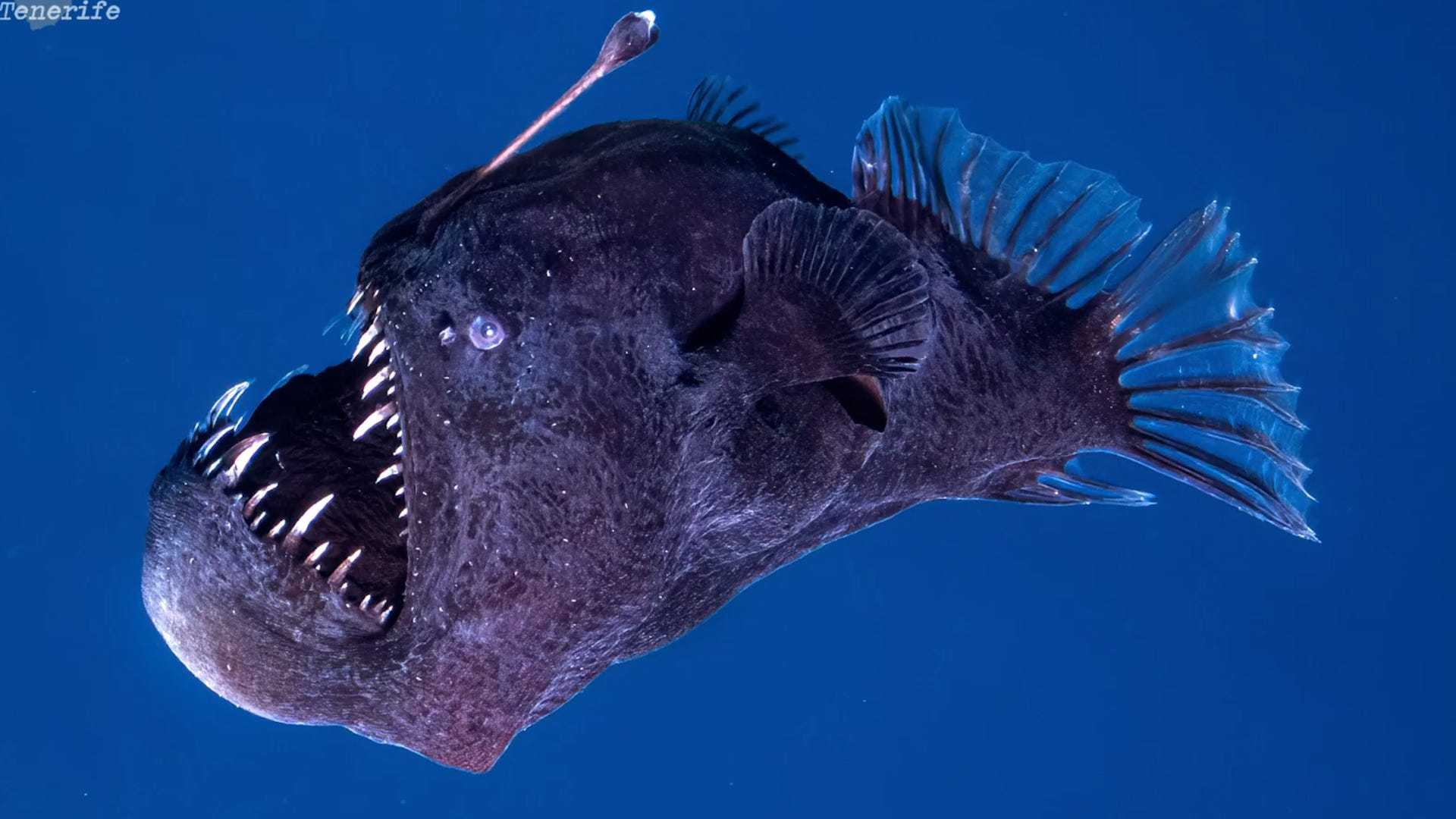News
Rare Humpback Anglerfish Spotted in Daylight Off Tenerife Coast

Santa Cruz de Tenerife, Spain — Researchers off the coast of Tenerife have made a groundbreaking discovery: the first-ever sighting of a rare humpback anglerfish in broad daylight. The adult fish, scientifically known as Melanocetus johnsonii, was observed near the ocean’s surface during a shark research expedition conducted by the NGO Condrik.
On October 2, 2025, underwater photographer David Jara Boguñá first spotted the fish approximately two kilometers from shore. Traditionally found at depths between 200 and 2,000 meters (approximately 650 to 6,561 feet), this rare instance has generated excitement among marine biologists and enthusiasts alike.
Previous encounters with the humpback anglerfish have been limited to submarine footage, dead specimens, or larvae. Marine biologist Laia Valor, also part of the expedition, described the moment as surreal, stating, “We were returning to port when I saw something black in the water that didn’t look like plastic or debris. It seemed unusual.”
Valor recounted the experience of observing the fish for a couple of hours, noting, “It was in poor condition and only survived for a few hours.” Following its death, the body of the anglerfish was transported to the Museum of Nature and Archaeology (MUNA) in Santa Cruz de Tenerife for further research.
Researchers have yet to determine the reasons behind the fish’s unusual surface appearance. However, some scientists speculate that environmental factors, such as an El Niño weather event, might prompt instances of the species rising towards the surface due to reduced cold water upwelling in the region.
Despite its terrifying appearance, which includes a large mouth filled with sharp teeth, the humpback anglerfish employs a bioluminescent lure on its head, a trait common among deep-sea creatures used to attract prey in the darkness of their natural habitat. “There could be thousands of reasons why it was there,” Valor explained. “We simply don’t know. It’s an extremely rare and isolated sighting.”
The sighting not only contributes to the limited knowledge surrounding this elusive species but also highlights the richness of deep-sea biodiversity that is often hidden from human eyes. With the body now at MUNA, researchers hope to advance their understanding of the anglerfish and its behaviors.












